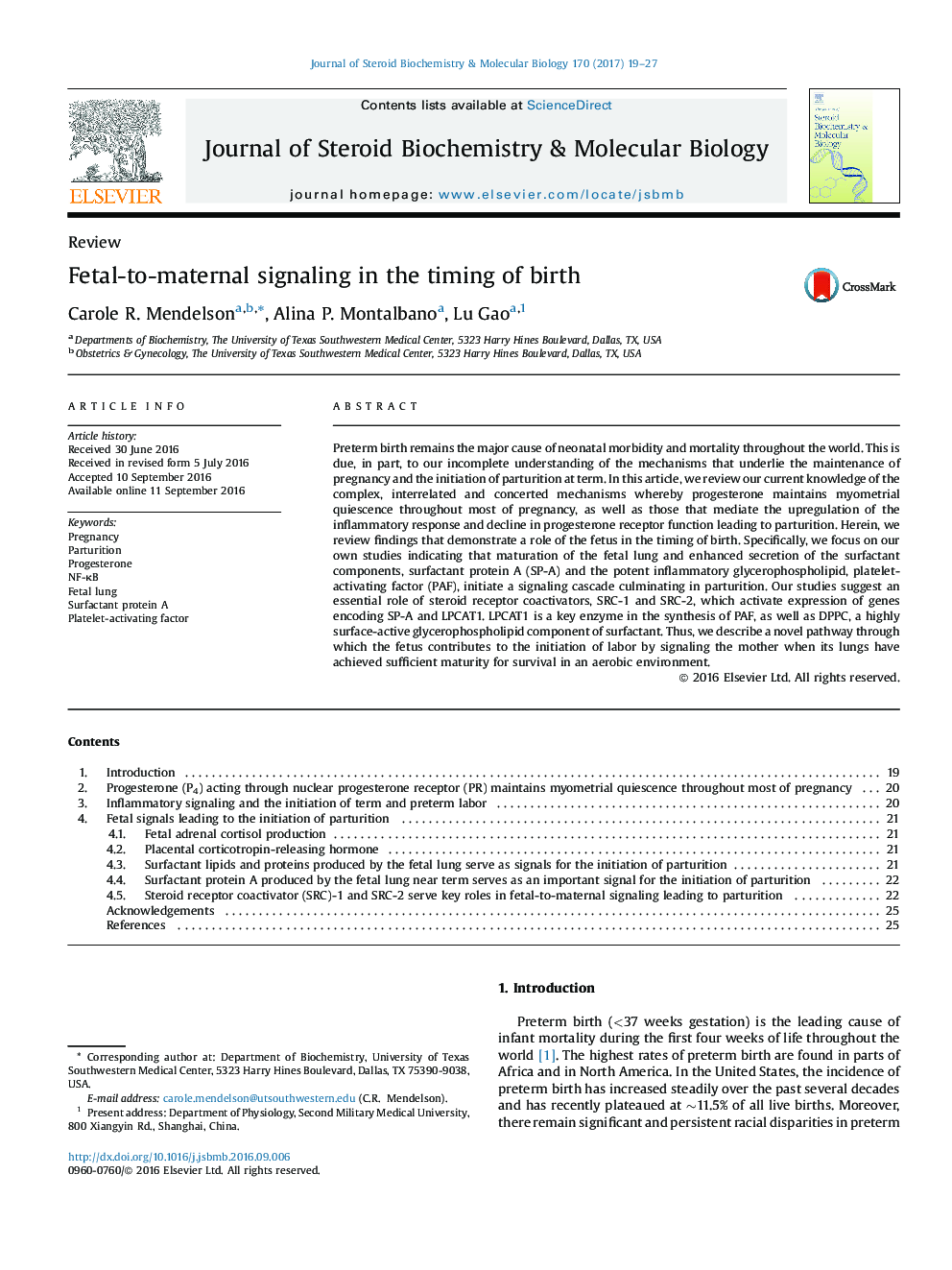| Article ID | Journal | Published Year | Pages | File Type |
|---|---|---|---|---|
| 5513063 | The Journal of Steroid Biochemistry and Molecular Biology | 2017 | 9 Pages |
â¢Progesterone acting via PR maintains myometrial quiescence during pregnancy.â¢This occurs via inhibition of inflammatory and contractile genes.â¢Myometrial contractility is induced by increased inflammatory signaling.â¢The fetal lung secretes signals that contribute to the initiation of labor at term.â¢Signals include surfactant protein-A (SP-A) and platelet-activating factor (PAF).
Preterm birth remains the major cause of neonatal morbidity and mortality throughout the world. This is due, in part, to our incomplete understanding of the mechanisms that underlie the maintenance of pregnancy and the initiation of parturition at term. In this article, we review our current knowledge of the complex, interrelated and concerted mechanisms whereby progesterone maintains myometrial quiescence throughout most of pregnancy, as well as those that mediate the upregulation of the inflammatory response and decline in progesterone receptor function leading to parturition. Herein, we review findings that demonstrate a role of the fetus in the timing of birth. Specifically, we focus on our own studies indicating that maturation of the fetal lung and enhanced secretion of the surfactant components, surfactant protein A (SP-A) and the potent inflammatory glycerophospholipid, platelet-activating factor (PAF), initiate a signaling cascade culminating in parturition. Our studies suggest an essential role of steroid receptor coactivators, SRC-1 and SRC-2, which activate expression of genes encoding SP-A and LPCAT1. LPCAT1 is a key enzyme in the synthesis of PAF, as well as DPPC, a highly surface-active glycerophospholipid component of surfactant. Thus, we describe a novel pathway through which the fetus contributes to the initiation of labor by signaling the mother when its lungs have achieved sufficient maturity for survival in an aerobic environment.
